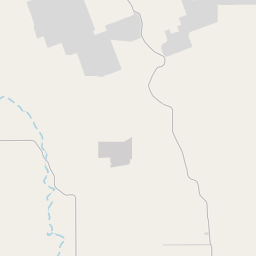Battle of the Arroyo Hondo
Historical marker location:






In 1842 the Mexican Army launched three invasions into Texas to reclaim territory lost during the Texas Revolution. Col. Rafael Vasquez's Army briefly occupied San Antonio in March, and in July Texans fought with Col. Antonio Canales' forces near San Patricio. When Gen. Adrian Woll's Mexican forces advanced through South Texas and captured San Antonio on September 11, Texan volunteers gathered for battle. More than 200 men under the command of Matthew Caldwell assembled at Salado Creek six miles east of the city, where on September 18 they fought with the Mexicn Cavalry. With losses on both sides, the Mexicans returned briefly to San Antonio before beginning their march toward the border. Additional Texan forces marshaled to meet Woll's Army, and on September 21 another battle occurred at Hondo Creek (Arroyo Hondo) near this site. Although Texan and Mexican accounts of the engagement varied considerably, reliable sources indicate that the Texans, plagued by dissension and a lack of clear leadership, failed in their attempt to rout the Mexican forces. The Mexicans returned home and the Texas government, in response to the 1842 invasions, mounted the ill-fated Somervell Expedition later that year.
1992
As one of the most visible programs of the Texas Historical Commission (THC), historical markers commemorate diverse topics in Texas history, including: the history and architecture of houses, commercial and public buildings, religious congregations, and military sites; events that changed the course of local and state history; and individuals who have made lasting contributions to the state, community organizations, and businesses.
In the late 19th century, Texas became known for its cattle drives, in which cowboys would move herds of cattle from Texas to railheads in Kansas and other northern states. The cattle drives were dangerous and difficult work, but they played a key role in the development of the American cattle industry.
In the 17th century, Spanish explorers arrived in the region, claiming the land for Spain. The Spanish established missions in the area to convert the Native Americans to Christianity and to further their control over the territory. One of the most notable missions was Mission San Francisco de la Espada, which still stands today and is a popular tourist attraction.
During the 19th century, the area that is now Medina County became a part of the Republic of Texas after it gained independence from Mexico. As more settlers moved into the area, the town of Castroville was founded in 1844 by colonists led by Henri Castro. The town became a major hub for German immigrants, and their influence can still be seen today in the town's architecture and cultural heritage.
Over the years, Medina County has experienced significant economic growth and development. The discovery of oil in the early 20th century led to an oil boom in the area, and agriculture has also played a significant role in the county's economy, with cattle ranching and crop farming being major industries.
Today, Medina County is a thriving community that celebrates its rich history and diverse cultural heritage. Visitors can explore the area's historical sites, such as the missions and historic downtown areas, while also enjoying the natural beauty of the surrounding countryside.
Medina County Timeline
This timeline provides a glimpse into the major events and milestones that have shaped the history of Medina County, Texas.
- 1841 - Medina County is established as a county in the Republic of Texas.
- 1842 - Castroville, the county seat, is founded by Henri Castro.
- 1846 - Medina County becomes part of the United States after the annexation of Texas.
- 1850 - D'Hanis, another town within Medina County, is settled.
- 1856 - Hondo is founded and becomes the new county seat.
- 1861-1865 - During the Civil War, Medina County supports the Confederacy.
- 1881 - The International-Great Northern Railroad is completed, boosting economic development.
- 1917-1918 - Many Medina County residents serve in World War I.
- 1920s-1930s - The Great Depression causes economic hardship in the county.
- 1942-1945 - World War II leads to changes in the local economy and military service.
- 1953 - Medina Lake is created with the construction of Medina Dam.
- 1998 - The historic Medina County Courthouse is restored after a fire severely damages it.